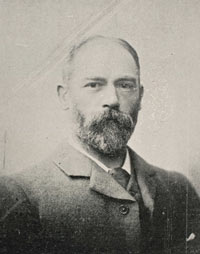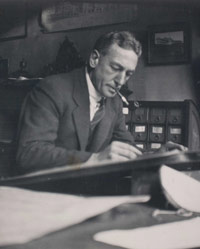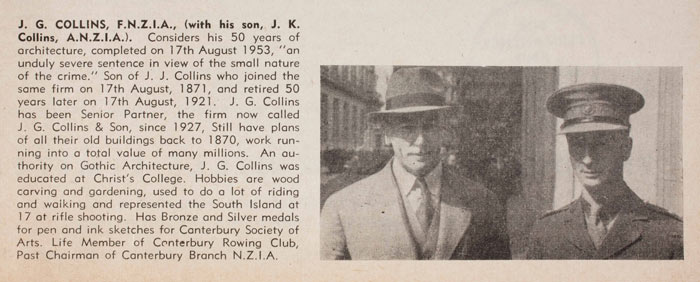Four generations of the Collins family were to serve as architects for Canterbury College and the University of Canterbury. They included:
- John James Collins (1855–1933)
John James Collins was born in Christchurch in 1855. He was the son of James and Selina Collins who had arrived on board the Bangalore from England in 1851. His father is noted in different sources as being either a gentleman farmer or a gentleman’s servant, but the Passenger List for the Bangalore records James Collins, in steerage, as a general labourer. Mr Collins Snr served as the Steward at the Canterbury Club, and then established several hotels, including successfully running Collins Hotel in Hereford St, (which was later known as the Occidental).
J.J. Collins was educated at Christ’s College from 1865 to 1871, and so would have witnessed firsthand the establishment of the Canterbury Collegiate Union. He was interested in architecture, and joined William Armson’s firm in 1871 as an articled pupil at the age of 16. Collins was also evidently a keen sportsman, having been a member of the Canterbury Rowing Club, and a life member of Canterbury Rugby Union. He was elected a life member of the Rowing Club after designing their new sheds on the Avon in 1886.



